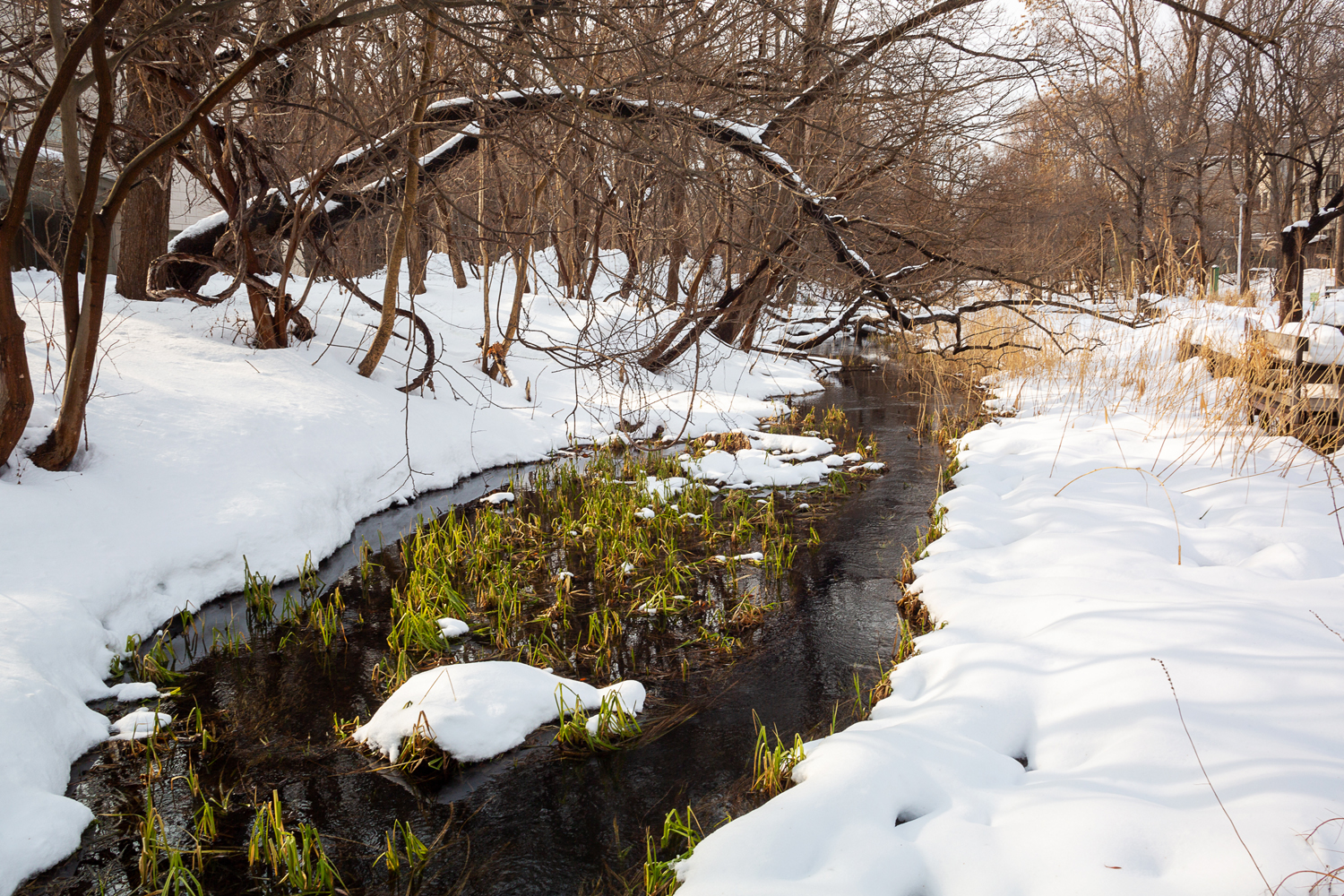
Many archeological sites have been found around the Sakushukotoni River, which flows through the Hokkaido University campus.

Many archeological sites have been found around the Sakushukotoni River, which flows through the Hokkaido University campus.
The Hokkaido University Museum is a place on the Hokkaido University campus where many members of the public can be seen. It combines a classic atmosphere and is extremely popular.
Few people know about the small Hokkaido University Archaeological Research Center located almost diagonally across from the museum, but it plays an important role in understanding the history of the area around the university, as well as that of Sapporo and Hokkaido.

Hokkaido University Archaeological Research Center
Rivers flows through the Hokkaido University campus. The Sakushukotni River runs south-north through what is almost the center of the campus, and the Serompetsu River is located at the western tip. People have lived around these rivers since approximately 5,000 years ago.
A large part of the expansive university campus is an archaeological site. The present campus was built on 5,000 years of archaeological remains and artifacts from the mid-Jomon period to the post-Jomon period, the Satsumon and Ainu cultures and up to modern times.
The Hokkaido University Archaeological Research Center (hereafter referred to as ‘the Center’) is a facility that conducts archaeological surveys prior to underground excavation work being carried out on campus. It has been researching and preserving excavated materials collected on campus for over 40 years since its establishment in 1980, with some of these materials displayed in an adjacent exhibition room.
The Center has surveyed more than 60 archaeological sites on the campus to date, and information boards have been installed at about 20 of these sites. Visitors can actually link the excavated materials with the locations of the archaeological sites from which they were excavated.

An information board installed at an archaeological site on campus

Artifacts excavated from the archaeological sites on campus are displayed in an exhibition room
The permanent exhibits in the exhibition room focus on materials from the post-Jomon and Satsumon cultures, which are the periods in which this land was mainly used. The earthenware that symbolizes the archaeological sites on the Hokkaido University campus has been named ‘Hokkaido University-style’.
It is one of the types of pottery produced between the 5th and 7th centuries during the latter half of the post-Jomon culture (approximately 1,900 to 1,300 years ago), and is characterized by a circular pattern made by pressing a stick-shaped object around the rim of the vessel. According to the Center’s Takakura Jun, “It is thought to be a model in the process of transition from the corded-ware pattern, which continued from the Jomon period, to the patterns in the next period, the Satsumon culture, which were made by rubbing the clay with a spatula-like tool.” The reason why it is named after the university (Hokudai) is because this type of pottery was first discovered on the campus of Hokkaido University. “There are no other examples in the entire country where the name of a university is used,” adds Takakura

Hokkaido University-style earthenware
Among the artifacts excavated from the Hokkaido University campus are several pieces of earthenware from the Satsumon culture (approx. 1,300–800 years ago). This period corresponds to the Nara and Heian periods in Honshu. Especially rare is a shallow bowl-like vessel with characters engraved on the surface. There are only two such examples excavated in Hokkaido, and it is believed that they were made in the Tohoku region and brought to Hokkaido.

A shallow bowl engraved with characters
What does this mean? Takakura says the key lies in the rivers that flow through the Hokkaido University campus. “At that time, you could reach the sea by boat from here,” he says. “In other words, it is thought that this site may have been a distribution center for goods from Honshu.”
The Satsumon culture was strongly influenced by Honshu, and people obtained iron products as well as pottery through trading with Honshu. In addition, rice and grain were found when the soil was washed with water. Until then, the Satsumon people were thought to have been hunter-gatherers, but this was the first time to learn that they also engaged in agriculture. In addition, a series of important discoveries made on Hokkaido University campus clarify the Satsumon culture, including a ‘Hokkaido-style burial mound’ that is part of a grave of the Satsumon culture influenced by the Honshu region, which was discovered for the first time in Sapporo.

Ironware found in the remains of a ditch of a Hokkaido-style burial mound
The archaeological site trail walk event began about 10 years ago with the aim of helping the local community learn more about such discoveries and the excavation sites. Twice a year, in spring and autumn, visitors are guided by Takakura and other faculty members at the Center, on a tour of some of the campus sites, including one in the nearby Hokkaido University Botanical Garden.

The archaeological site trail walks are a popular event (photo courtesy of the Hokkaido University Archaeological Research Center)

Assistant Professor Takakura Jun, Hokkaido University Archaeological Research Center
Hokkaido University Archaeological Research Center 
Kita 11-jo Nishi 7-chome, Kita-ku, Sapporo, Hokkaido
Tel. 011-706-2671
Open times: 9:00–15:00
Open days: Mon. to Fri. *Closed Sat., Sun. and public holidays
Admission free